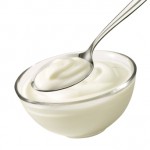
Nutrition plays a significant role in spinal health. Certain foods will boost bonestrength, and soft-tissue health and healing. Your low back pain or neck pain will not go away with food alone, but you definitely will further your body’s innate healing power.
Here are some straightforward guidelines that are easy to follow.
Build Your Bones With Calcium and Vitamin D
Calcium is the most abundant mineral in the body. More than 99 percent of the body’s calcium supply is found in the bones and teeth. It supports their structure. Calcium is also important for proper muscle function, nerve transmission, and hormonal secretion.
A diet rich in calcium is a bone-healthy diet that helps keep your vertebrae strong.
Be sure to take in calcium-rich foods such as:
- milk
- low-fat yoghurt
- cheeses like Edam, Cheddar and Parmesan
- vegetables like curly kale, okra, red kidney beans, baked beans
- nuts like almonds, hazelnuts, walnuts, and sesame seeds and tahini paste
- fish like whitebait, sardines (in oil, tinned) and salmon
- figs and apricots
- tofu, soy bean, eggs
Health Canada recommends the following dietary allowances (RDA) of Calcium per day:
Age Group RDA Tolerable Upper Intake Limit/Day
Adults 19-50 years 1000mg 2500mg
Adults 51-70 years
Men 1000mg 2000mg
Women 1200mg 2000mg
Adults > 70 years 1200mg 2000mg
Pregnant/Lactating
(19-50 years) 1000mg 2500mg
Vitamin D is a nutrient that helps the body use calcium and phosphorous to build and maintain strong bones. Too little vitamin D can cause calcium and phosphorus levels in the blood to decrease, leading to calcium being pulled out of the bones. This can cause osteomalacia (softening of the bones) or osteoporosis (fragile bones) in adults. On the other hand, too much vitamin D can cause too much calcium to be deposited in the body, which can lead to calcification of the kidney and other soft tissues including the heart, lungs and blood vessels.
Health Canada recommends the following dietary allowances (RDA) of Vitamin D per day:
Age Group RDA Tolerable Upper Intake Level/Day
Children & Adults
9-70 years 600 IU 4000IU
Adults >70 years 800IU 4000IU
Pregnant/Lactating 600IU 4000IU
Vitamin D is synthesized by the body after exposure to ultraviolet rays from sunlight. It is found naturally in fatty fish and egg yolks. In Canada, cow’s milk and margarine must be fortified with Vitamin D. Other products may be fortified by the manufacturer, like Calcium-enriched orange juice.

Heal and Maintain Soft-tissue with Nutrients
Three nutrients boost healing and generation of soft-tissue, including discs and surfaces of the spinal joints.
Glucosamine sulfate: Found naturally in the body, is essential for maintenance and repair of collagen (the primary component of spinal discs). The body uses glucosamine sulfate to form the chemicals it needs to repair cartilage, tendons and ligaments, and synovial fluid (the naturally occurring fluid that bathes the spinal joints). Collagen helps to maintain and repair spinal joint cartilage.
Antioxidants: increase naturally occurring collagen.
Omega 3 Fatty Acids: have collagen-forming properties and are used by the body to repair and prevent damage to cartilage and discs caused by inflammation
In addition:
Sulphur-rich foods accelerate protein and collagen production
Anti-inflammatories naturally reduce swelling
Soy products are high in genistein (a substance called an isoflavone). Genistein is believed to be responsible for collagen production and also acts to block any naturally occurring enzyme responsible for breaking down collagen.
Fibre helps digestion to remain smooth and not place strain on the discs that are vulnerable to increases in pressure in the abdomen.
Boost soft-tissue health and healing with such foods as:
- Shellfish: crab, shrimp, prawns and oysters
- Dark green vegetables: kale, spinach, collards, asparagus
- Red Fruits and Vegetables: red peppers, beets, stewed or fresh tomatoes, dark berries like blueberries and blackberries
- Soy Products: soy milk, soy cheese and tofu
- Black olives
- Red onions and apples (naturally high in a substance called quercitin which has natural anti-inflammatory properties)
- Flaxseeds, chia seeds
- Beans: navy beans, kidney beans, soybeans, etc.
- Cold Water oily Fishes: anchovies, herring, sardines, salmon and mackerel
- Winter Squash
- Olive oil
- Fruits, nuts, vegetables and grains
Clear Water: Keep yourself super-hydrated. It’s always important to give your body water necessary for the re-hydration process in the healing of degenerated discs. Ideally, drink 8 10-ounce cups of clear water per day.
On the converse, there are foods to avoid. Nitrates, sugars and fats can exacerbate the inflammation and pain associated with back pain. These foods to avoid include:
- Processed foods high in nitrites (think, processed meats).
- Foods high in sugar, saturated and trans fats.
- Any foods containing high fructose corn syrup.
Remember, everything you eat and drink directly impacts your health. Give yourself every advantage for health and healing.
Yours in health,
Dr. Ron Nusbaum


One thought on “Nutrition and a Healthy Spine”